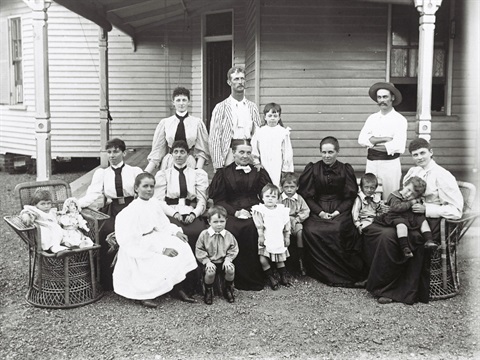Genealogy at home: Getting started
Published on 24 March 2020

Your first task is to do the preliminary work which is really important to making your research run smoothly. The following points are designed to get you organised and prepared. Please feel free to leave a reply, and we will try to answer your questions.
Gather all of the information you have
Genealogy is more than names on a family tree. Documentation is an important part of a family history. Filling in the details of your ancestors lives and getting to know them as people is a most rewarding challenge.
You may have at hand information to add to your family tree. Beyond the obvious of birth, marriage and death certificates, look for information from a family bible, newspaper clippings (such as obituaries, birth, and wedding announcements, and other events in your family’s life), funeral cards, old pictures of your family, and letters.
Then, write down what you remember from family stories. Many of these stories might be true, others may be inaccurate. All are important for the clues they will give you. Don’t forget yourself. Some genealogists get so caught up in chasing ancestors that they forget to document their own lives.
Talk to your relatives
It is always important to talk to your oldest relatives while they are still alive. While visiting is out of the question at the moment, you call, write and email more distant relatives. What you are looking for are records they may have that they will copy for you, additions to the family stories, and the work some of them may have already done on your family tree.
- Be sure you write down (record) what others tell you.
- Ask where your ancestor went to school, met his/her spouse, got married. Remember location is important for further research
- Do not ignore family legends – but also do not take them as certain to be literally true. Rather, use them as yet another source of guidance for finding out the truth about the past.
- Remember that perhaps not everyone will be happy about your new interest in genealogy. Particularly, older relatives may think you will unearth family skeletons.
Has it already been done?
The next step is to find out if there is someone out there who you don’t know yet researching your family as part of their own genealogical investigations. There are a few ways you can go about this without access to the commercial databases
- Internet – Try Googling the name you are researching along with the words “family history” or genealogy. Remember putting words in inverted commas “” forces Google to search for the words as a phrase eg. “John Armstrong Smith”
- Published genealogies via the Trove website. Trove lists books and other information sources held in libraries and cultural institutions around Australia.
Decide which branch of the family tree to start your search on
The mistake that many beginning genealogists make is to try to research too many family branches at the same time. It doesn’t take long before you will be confused and lost with that method.Start with the surname that seems most promising.
A little bit of success will be helpful at the start, and an easier line will enable you to gain experience before you tackle more difficult research. When you run into what genealogists call ‘the brick wall’, you can set aside that branch and start work on another. Once you have had a bit of experience, you might find that brick wall easier to overcome.
In our next post we will discuss setting up a system to record and organise your research.